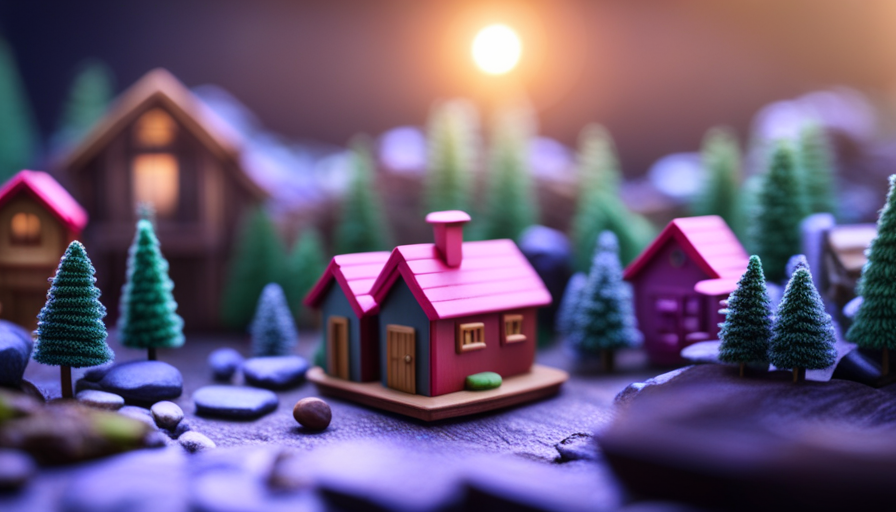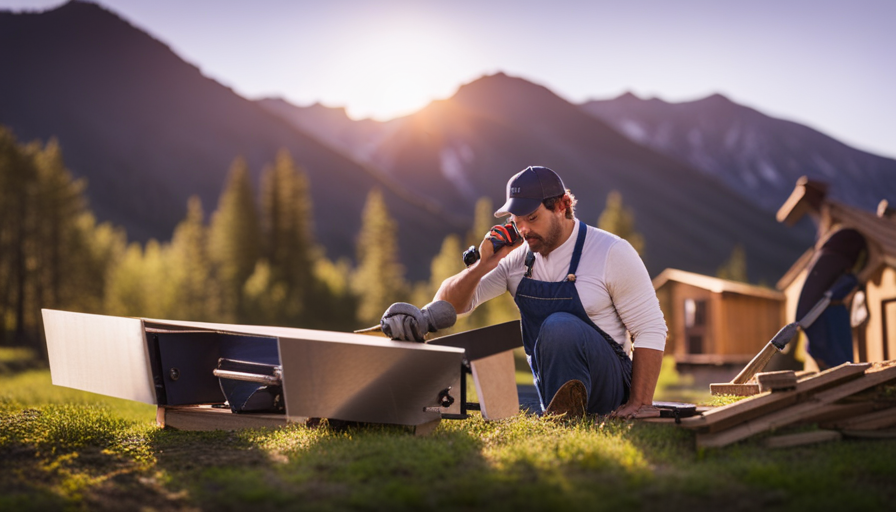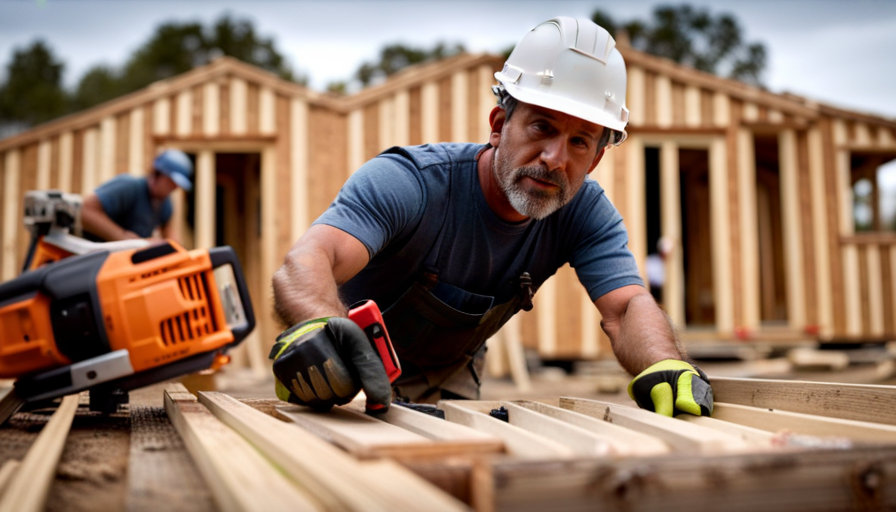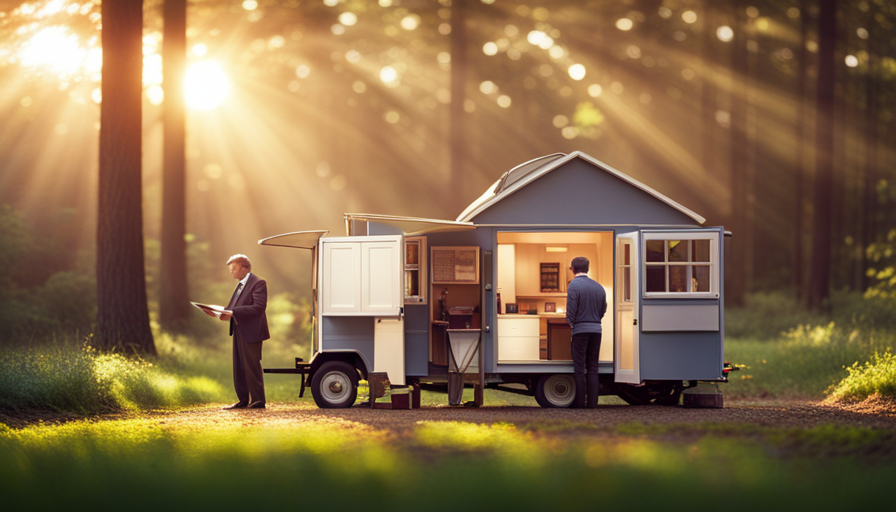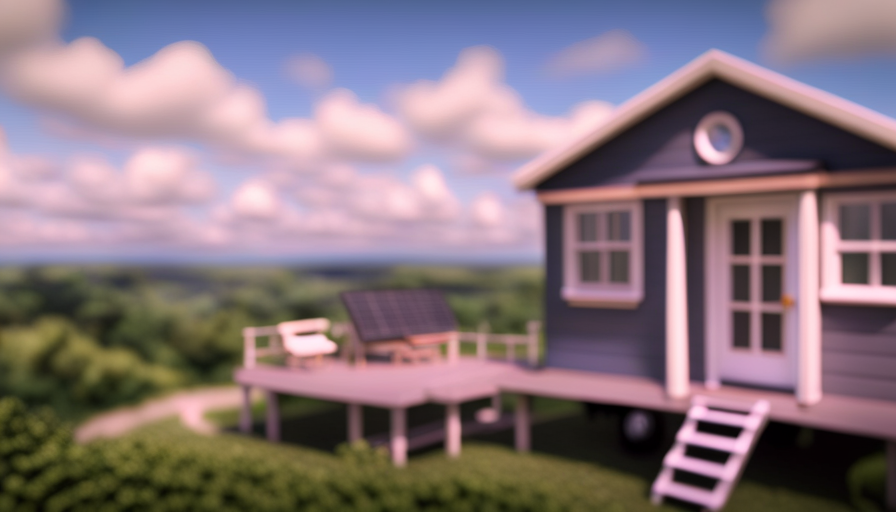As the saying goes, “Good things come in small packages.” This is particularly true when it comes to finding the perfect tiny home. If you’re like me, the idea of downsizing and embracing a minimalist lifestyle is appealing. But the question remains: where can you buy a tiny house?
Fear not, for I have embarked on a journey to uncover the best places to find these charming dwellings. From pre-built tiny house companies to DIY kits, custom builders to tiny house communities, I’ve left no stone unturned in my quest for the perfect tiny abode.
So, whether you’re ready to take the plunge into tiny living or simply curious about this growing phenomenon, join me as we explore the many avenues to finding and purchasing your own tiny house. Get ready to discover a whole new world of compact living possibilities.
Key Takeaways
- Research pre-built tiny house companies and read reviews
- Visit showrooms or model homes to get a firsthand look at tiny houses
- Consider DIY tiny house kits for personalization and cost-effectiveness
- Explore custom tiny house builders for design flexibility and customization options
Determine Your Needs and Budget
You’ll need to figure out what you need and how much you can afford before diving into the world of tiny house shopping. Researching tiny house financing options is a crucial first step. There are various ways to finance a tiny house, including personal loans, RV loans, or even crowdfunding. It’s important to explore all your options and find the best fit for your financial situation.
In addition to determining your budget, you should also consider zoning regulations. Different areas have different regulations regarding where you can park or live in a tiny house. Some places may require you to have a foundation or be connected to utilities, while others may allow you to be more flexible. Understanding the zoning regulations in your area will help you avoid any legal issues and find the perfect spot for your tiny house.
Once you have a clear understanding of your needs and budget, it’s time to research pre-built tiny house companies. These companies specialize in designing and constructing high-quality tiny homes. They offer a range of styles and sizes to choose from, allowing you to find the perfect fit for your lifestyle. With your research and budget in hand, you’ll be well-prepared to find the right pre-built tiny house for you.
Research Pre-Built Tiny House Companies
Finding a cozy abode is made easier with a variety of pre-built companies that specialize in crafting pint-sized dwellings. These companies offer a range of options to suit different needs and budgets, making it convenient for anyone looking to buy a tiny house.
When researching pre-built tiny house companies, it’s important to consider factors such as tiny house financing and zoning regulations.
One of the advantages of buying from a pre-built company is that they often offer financing options specifically tailored for tiny houses. This can be a great help, especially if you don’t have the full amount upfront. Additionally, these companies are well-versed in local zoning regulations and can guide you through the process of ensuring your tiny house complies with the necessary codes and permits.
To find the right pre-built tiny house company for you, start by researching different companies online and reading reviews from previous customers. Look for companies that have a good reputation, transparent pricing, and a range of designs to choose from. It’s also a good idea to visit their showrooms or model homes if possible, to get a better sense of the quality and craftsmanship.
Considering DIY tiny house kits? These kits provide an alternative option for those who prefer a more hands-on approach to building their own tiny house.
Consider DIY Tiny House Kits
If you’re itching to get your hands dirty and unleash your inner architect, consider exploring the world of DIY tiny house kits, where your dreams of creating a personalized, pint-sized sanctuary can become a reality. DIY tiny house kits offer an opportunity to build your own tiny home from scratch, with the help of pre-designed plans and materials.
To give you a better understanding of what DIY tiny house kits entail, here is a table highlighting some key aspects:
| Pros | Cons | Cost-effective |
|---|---|---|
| Allows for personalization | Requires time and effort | Saves money |
| Sense of accomplishment | Need for construction skills | Potential for mistakes |
| Flexibility in design | Limited support and guidance | Affordable materials |
Building your own tiny house has its advantages and disadvantages. On the positive side, it allows for complete personalization, giving you the freedom to design every aspect of your tiny home. It also provides a sense of accomplishment, as you can proudly say that you built your own living space. Additionally, building your own tiny house can be cost-effective, as it saves money compared to buying a pre-built one.
However, there are some drawbacks to consider. Building a tiny house requires time, effort, and construction skills. You may encounter challenges along the way and the potential for mistakes is always present. DIY tiny house kits also provide limited support and guidance, which means you’ll need to rely on your own research and problem-solving skills.
DIY tiny house kits offer an exciting opportunity for those who want to take a hands-on approach to building their own tiny home. If you’re up for the challenge, dive into the world of DIY tiny house plans and start creating your dream space. In the next section, we will explore custom tiny house builders to provide you with alternative options for acquiring your dream tiny home.
Explore Custom Tiny House Builders
Once you delve into the world of custom tiny house builders, a whole new realm of possibilities opens up for creating your ideal living space. Custom tiny house builders offer the opportunity to design a home that perfectly suits your needs and preferences. Whether you want a modern, minimalist design or a cozy, rustic cabin feel, these builders can bring your vision to life.
When working with a custom tiny house builder, you have the freedom to choose every aspect of your home, from the layout and materials to the finishing touches. You can create a space that maximizes functionality and reflects your personal style. Many builders also offer customization options for furnishings and appliances, allowing you to create a truly unique living experience.
In addition to the design flexibility, custom tiny house builders often provide financing options to help make your dream home a reality. They understand that purchasing a tiny house is a significant investment and are willing to work with you to find a financing solution that fits your budget.
As you explore the world of custom tiny house builders, attending tiny house expos and events can further expand your knowledge and connect you with professionals in the industry. These events often showcase the latest custom tiny house designs and provide valuable insights into the building process. By immersing yourself in this community, you can gain inspiration and find the perfect builder to create your dream tiny home.
Attend Tiny House Expos and Events
Attending tiny house expos and events allows you to immerse yourself in a community of like-minded individuals and gain valuable insights into the world of custom tiny home design. These events provide a unique opportunity to connect with builders, designers, and other tiny house enthusiasts who can offer guidance and support throughout your journey.
One of the major benefits of attending these expos is the chance to explore various financing options for your tiny house. Many exhibitors are knowledgeable about different financing resources, including loans, grants, and crowdfunding platforms specifically tailored for tiny homes. They can provide valuable information and advice on how to navigate the complexities of financing a tiny house.
Additionally, tiny house expos and events often feature discussions and workshops on zoning regulations. Zoning laws can significantly impact where you can park or build your tiny house, so it’s crucial to understand the rules and regulations in your area. Experts at these events can provide insights into navigating zoning restrictions and help you find suitable locations for your tiny home.
By attending tiny house expos and events, you can expand your knowledge, make connections, and gain a deeper understanding of the tiny house movement. Once you have explored these options, it’s time to check online marketplaces and classifieds for available tiny houses.
Check Online Marketplaces and Classifieds
After attending Tiny House Expos and Events, I realized that it’s time to explore other avenues for finding my dream tiny house. That’s when I turned to online marketplaces and classifieds, where I found a plethora of options at my fingertips.
Online marketplaces such as Tiny House Listings and Tiny House Marketplace offer an extensive range of tiny houses for sale. These platforms allow me to browse through different styles, sizes, and price ranges, making it easier to find one that suits my needs and budget. Additionally, I can filter my search based on location, which is essential when considering tiny house zoning regulations.
Classified websites like Craigslist also provide a platform for individuals to sell their tiny houses directly. This can be a great way to find unique and affordable options, as sellers often offer financing options or negotiate on the price.
When exploring online marketplaces and classifieds, it’s important to thoroughly research and verify the legitimacy of the listings. Reading reviews and contacting the sellers directly can help ensure a smooth and reliable transaction.
Next, I will discuss how consulting with real estate agents can further assist me in my search for the perfect tiny house.
Consult with Real Estate Agents
When it comes to finding a tiny house, working with a real estate agent who specializes in these types of properties can be incredibly helpful.
I’ve found that these agents have a wealth of knowledge and experience in the tiny house market, and they can guide you in the right direction.
By discussing your requirements with them, they can help you find available options that meet your specific needs and preferences.
Work with real estate agents who specialize in tiny house properties
To find the perfect tiny house for you, start by connecting with a real estate agent who specializes in these unique properties. Working with brokers who are knowledgeable about the tiny house market can save you time and effort in your search.
Here are three reasons why it’s beneficial to work with real estate agents who specialize in tiny house properties:
-
Expertise in the market: These agents have a deep understanding of the tiny house market and can provide valuable insights on available options and trends.
-
Access to financing options: Tiny house financing can be challenging, but specialized agents can help you navigate through the process and connect you with lenders who offer financing for these types of properties.
-
Connections with builders and sellers: Real estate agents specializing in tiny houses often have a network of builders and sellers, giving you access to a wider range of options.
By discussing your requirements with these agents, they can help you find available options that meet your needs and preferences seamlessly.
Discuss your requirements and let them help you find available options
Connect with a specialized real estate agent who knows the ins and outs of the tiny house market, and watch as they unlock a treasure trove of available options tailored to your unique requirements, like a key in a hidden door. These agents have extensive knowledge and experience in the tiny house industry, and they can guide you through the process of finding the perfect tiny house for you. One of the benefits of working with these experts is their ability to find unique tiny house designs that suit your preferences. Whether you’re looking for a rustic cabin or a modern minimalist design, they can help you explore a wide range of options.
In addition to helping you find your dream tiny house, specialized real estate agents can also assist you in exploring financing options for tiny houses. They can provide valuable insights into different financing methods, such as loans or lease-to-own agreements, and help you navigate the financial aspects of purchasing a tiny house.
As you connect with these agents and discuss your requirements, they will not only help you find available options, but they can also provide guidance on joining tiny house communities. These communities offer a supportive and like-minded environment where you can connect with other tiny house enthusiasts, share ideas, and learn from each other’s experiences.
Join Tiny House Communities
If you’re looking to join a tiny house community, you can easily find like-minded individuals to share your love for minimalistic living. Joining communities is a great way to connect with people who have similar interests and experiences when it comes to tiny houses.
These communities often have resources and information about buying land suitable for tiny houses, which can be a challenge on your own. They can provide guidance on zoning regulations, permits, and other legal aspects of owning a tiny house. Additionally, being part of a community allows you to learn from others’ experiences and gain valuable insights into the tiny house lifestyle.
Buying land for a tiny house can be a complex process, but joining a community can make it easier. Members often share information about available land for sale that is suitable for tiny houses. They may have contacts with real estate agents who specialize in tiny house properties, making it easier to find the perfect location for your tiny home.
Consider renting or leasing a tiny house as an alternative to buying land and building your own. This can be a great option if you’re not ready to commit to owning a tiny house or if you want to experience the lifestyle before making a long-term investment. Renting or leasing allows you to try different locations and layouts, giving you a better understanding of what works best for you.
Consider Renting or Leasing a Tiny House
After considering joining tiny house communities, another option to explore is renting or leasing a tiny house. This can be a great way to experience the tiny house lifestyle before committing to purchasing your own.
Renting or leasing a tiny house allows you to live in a fully furnished and equipped tiny home without the long-term financial commitment.
When looking for renting options, there are various websites and platforms that specialize in tiny house rentals. These platforms connect tiny house owners with potential renters, making it easier to find available options in your desired location. Additionally, some tiny house builders and manufacturers offer rental programs, allowing you to try out their models before making a purchase.
Lease agreements for tiny houses are another option to consider. This involves signing a contract for a specific period, typically ranging from a few months to a year or more. Leasing a tiny house gives you the opportunity to make it your temporary home and experience the benefits of living in a small space without the responsibilities of ownership.
To further explore the tiny house lifestyle, the next step is to visit tiny house villages and resorts.
Visit Tiny House Villages and Resorts
When it comes to exploring tiny house living, one of the best ways to immerse yourself in the experience is by planning a trip to visit tiny house villages and resorts.
This allows you to not only see a variety of different designs and layouts, but also to experience different lifestyles and communities.
During your visit, make sure to take tours and speak with residents, as they can provide valuable insights and inspiration for your own tiny house journey.
Plan a trip to visit tiny house villages and resorts to experience different designs and lifestyles
Explore the enchanting world of tiny house villages and resorts, immersing yourself in diverse designs and lifestyles, as you plan an unforgettable trip. Witness firsthand the latest tiny house design trends and gain inspiration for your own dream home.
Discover the endless possibilities of tiny house living as you wander through these unique communities. Here are three reasons why visiting tiny house villages and resorts is a must:
-
Experience a variety of innovative designs, from sleek modern cabins to charming rustic cottages.
-
Learn about different financing options for tiny homes, such as rent-to-own or traditional mortgages, and get valuable insights on how to make your tiny house dream a reality.
-
Interact with residents who have embraced the tiny house lifestyle, and hear their stories of simplifying their lives and finding true happiness in a smaller space.
Take tours and speak with residents to gain insights and inspiration for your own tiny house journey.
Transitioning into the next section, let’s delve into the importance of understanding zoning regulations.
Take tours and speak with residents to gain insights and inspiration
After planning a trip to visit tiny house villages and resorts, I was excited to gain firsthand experience of different designs and lifestyles. The next step in my journey was to take tours and speak with residents to gain insights and inspiration.
Speaking with experts in the field allowed me to ask questions and learn from their experiences. They shared valuable tips and advice on everything from building materials to zoning regulations.
Attending workshops provided an opportunity to learn practical skills and techniques for constructing and maintaining a tiny house. It was fascinating to hear stories of how these residents have embraced the minimalist lifestyle and made the most of their small spaces.
These conversations and workshops not only expanded my knowledge but also fueled my excitement and determination to find my own tiny house.
Frequently Asked Questions
Are there any specific building codes or regulations that I need to be aware of when buying a tiny house?
When it comes to buying a tiny house, it’s crucial to be aware of building code requirements and legal considerations. It’s like walking a tightrope; you need to ensure compliance while enjoying the freedom of living in a compact space.
How do I finance a tiny house purchase?
To finance a tiny house purchase, I recommend researching lenders that specialize in tiny house financing. They understand the unique needs and challenges of tiny homes, and can help you secure a loan that fits your budget and goals.
Can I park a tiny house on any piece of land or do I need to find a specific location?
Parking a tiny house requires finding the right location. Just like a bee needs a specific flower to pollinate, tiny houses need to comply with parking restrictions and land use regulations.
Are there any zoning restrictions that I should consider before buying a tiny house?
Zoning restrictions are important to consider before buying a tiny house. They vary by location and can dictate where you can park your tiny house. Look for tiny house communities that have already addressed these restrictions.
What are the maintenance and upkeep costs associated with owning a tiny house?
Maintenance costs and upkeep expenses for a tiny house can vary depending on factors such as location, materials used, and personal preferences. Regular maintenance includes cleaning, repairs, and utilities, but overall costs are generally lower compared to traditional homes.
Conclusion
After exploring various options and considering my needs and budget, I’ve discovered a multitude of ways to buy a tiny house. I’ve researched pre-built companies and DIY kits, consulted with real estate agents, and attended tiny house expos. The possibilities are endless. It’s like diving into a vast sea of tiny house opportunities, each one offering a unique experience and lifestyle.
So, whether you choose to purchase, rent, or even join a community, the world of tiny houses is truly a treasure trove waiting to be explored.
Hi, I’m Emma. I’m the Editor in Chief of Tiny House 43, a blog all about tiny houses. While tree houses are often associated with childhood, they can be the perfect adult retreat. They offer a cozy space to relax and unwind, surrounded by nature. And since they’re typically built on stilts or raised platforms, they offer stunning views that traditional homes simply can’t match. If you’re looking for a unique and romantic getaway, a tree house tiny house might just be the perfect option.
